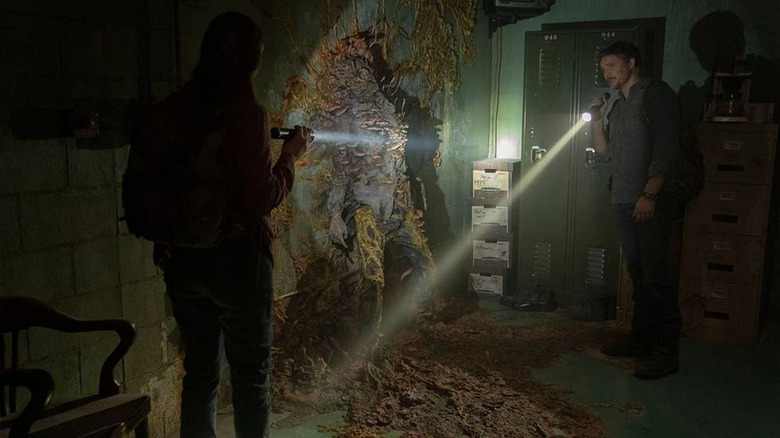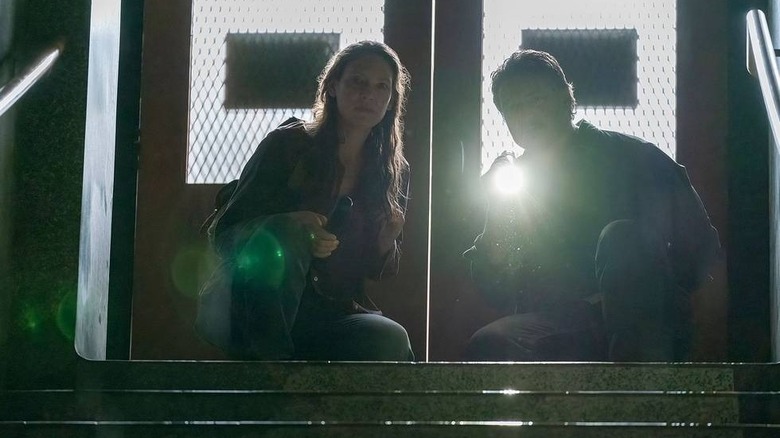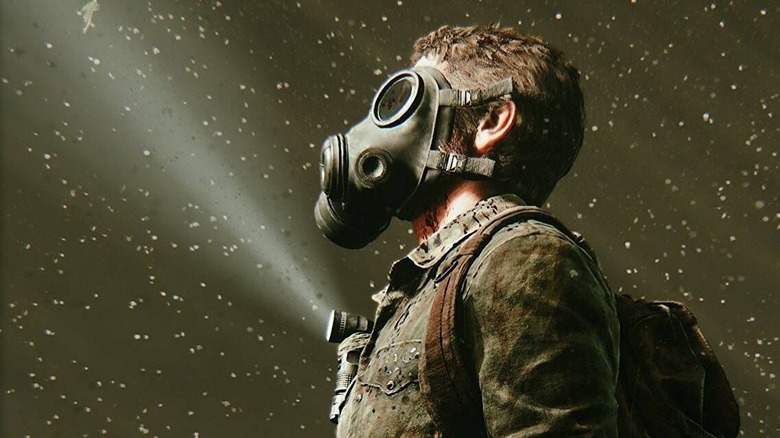HBO's The Last Of Us Won't Have Spores, And That's Fine
HBO's "The Last of Us" may still be a few days out, but the critics have already sung its praises. /Film's Valeria Ettenhofer raved about the post-apocalyptic series in her review, revealing it "rises to meet the challenge" of adapting the beloved franchise. Based on the trailer alone, "The Last of Us" is destined to be one of the most faithful video game adaptations of all time. However, one major change from the source material is ruffling some feathers on the internet (shocker!). HBO's "The Last of Us" will not include the airborne spores notorious for wreaking havoc and spreading the cordyceps virus on human civilization.
The people around Joel (Pedro Pascal) and Ellie (Bella Ramsey) are usually the most dangerous, but the fungi are pretty scary, too. In the video game, spores are a pretty major aspect of the surrounding fungi infection, and the main characters famously wear masks when entering an area filled with those pesky cells. In addition to a bite from a clicker, spores infect those who inhale and generally imply other clickers are nearby. The television series will be removing the spores entirely, using "tendrils" to interconnect the infected population instead.
Although "The Last of Us" is giving us what we've wanted, changes to the original canon were always inevitable. In this case, switching out spores for another plot device is a welcomed addition, as explained by the show's co-creator.
The infected are connected
In an interview with Collider, "The Last of Us" co-creator Neil Druckmann revealed that once it was decided that spores would not make it into the live-action adaptation, a new solution was formed:
"Eventually, those conversations led us to these tendrils. And then, just thinking about how there's a passage that happens from one infected to another, and like fungus does, it could become a network that is interconnected. It became very scary to think that they're all working against us in this unified way, which was a concept that I really liked, that got developed in the show."
The explanation given by Druckmann is thematically sound but also serves a more technical purpose. As seen in the latest trailer footage, the main characters explore fungi-ridden areas without any masks to protect them from spores. However, the sickly visual of the infection remains well-intact. Instead of covering up the faces of the actors during some of the most intense moments of the game, we see their reactions to the environment and the infected that walk (and screech) among it. The switch-up with tendrils helps convey the hive mind-like state of the infection and just makes more sense as a whole.
It didn't make that much sense anyway
HBO's "The Last of Us" won't be adhering to a rule that is actually not as grounded as it initially seems. As Craig Mazin aptly pointed out in an interview with Extraordinerd, spores would not realistically stay in one isolated location like in the video game. Spores move freely in the air, and as Mazin put it, "everybody would be wearing masks all the time." Although it's clear spores would have helped rapidly spread the virus, it would far less escapable than it appears in the video game.
There are few memorable moments in the original story that includes the masked characters venturing through spore-filled rooms, but this is not a make-or-break change to the established canon. In a series where getting to know the main characters through their performances is paramount, a gimmick like using a mask isn't that important in the grand scheme of things. The critical reactions thus far indicate a new era of video game adaptations is among us. When it comes to switching up source material designed to be experienced in a video game, HBO's "The Last of Us" is doing so in a way that honors the heart of its predecessors without losing what worked.
"The Last of Us" is set to premiere on January 15 on HBO and HBO Max.


